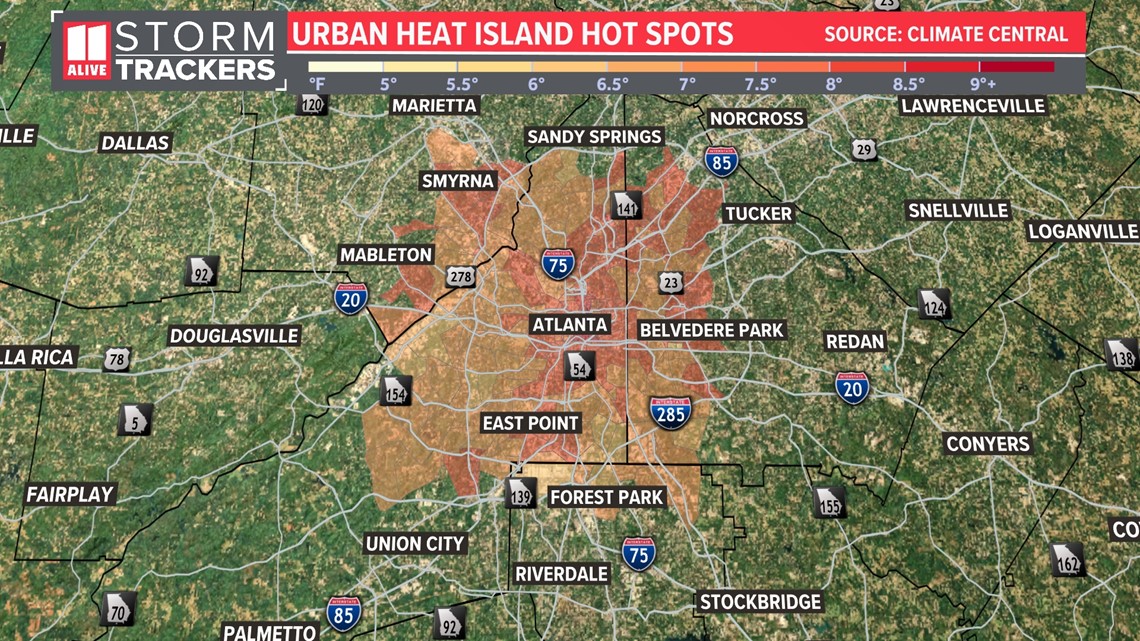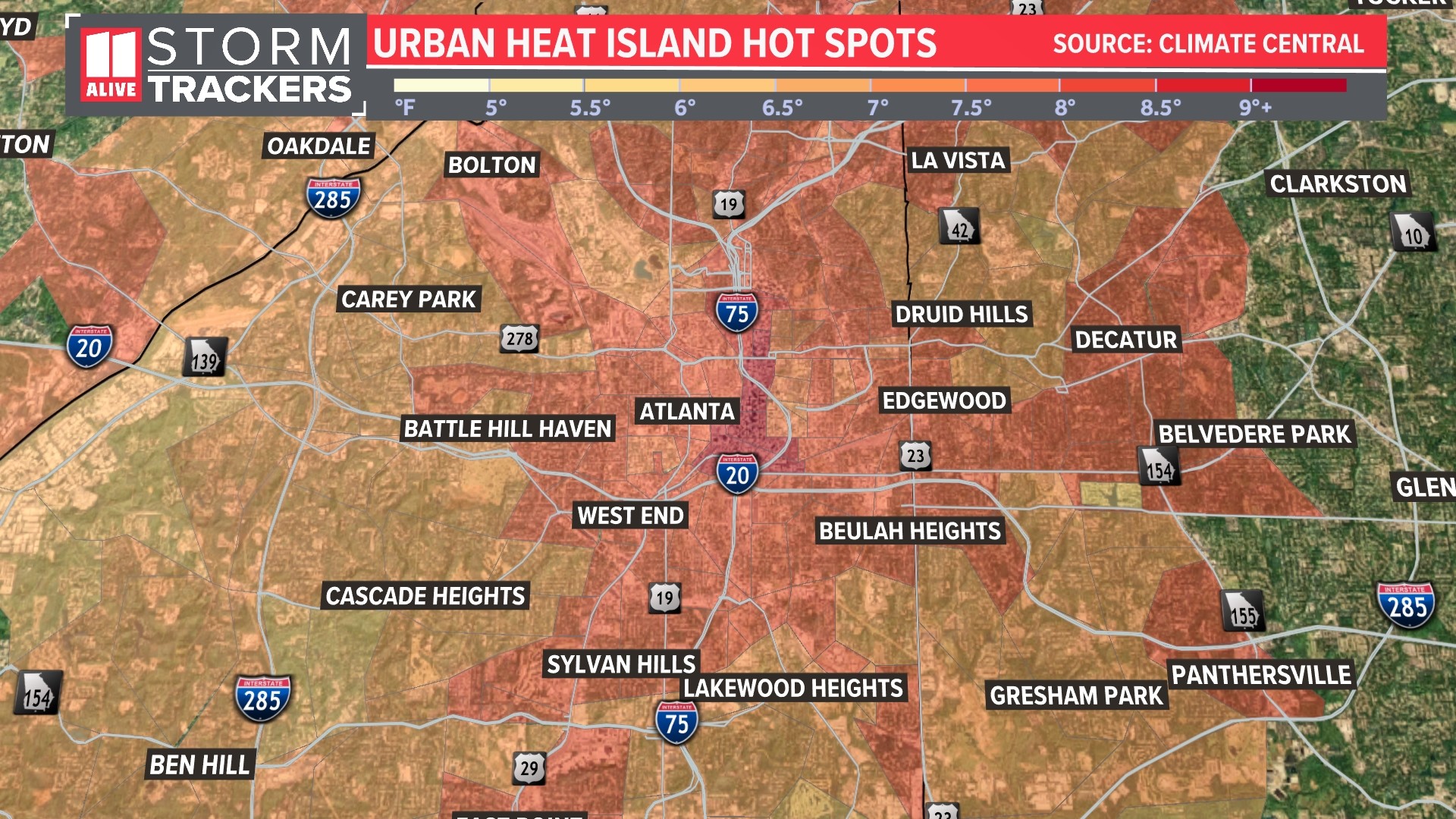ATLANTA — You've probably felt the difference before either on a hot afternoon or warm overnight, there are significant differences across the city with our temperatures.
This is known as the Heat Island Effect. These heat inequities are due to the varying land uses we have. In the middle of Midtown or Downtown, surrounded by concrete, asphalt, and skyscrapers-- the heat radiates off those surfaces. They stay hotter in the day and night.
In parks and along tree-lined streets, trees help to cool those areas throughout the day and night.
Climate Central released a new study on Wednesday, quantifying this Heat Island Index by U.S. Census tracts-- based on the land cover.
The results aren't anything groundbreaking, but they do help to visualize and put into perspective what Atlantans feel just based on what part of the city they live in.
The results, shown in the graphic below, reveal how much hotter the temps can be versus what they would be with a different land surface.


The greatest heat island hot spots for our city are right along the downtown connector, north of I-20. This is in the middle of skyscraper galore.


Jen Brady, senior data analyst with Climate Central, completed this study. She said this heat inequity can lead to even more health concerns as our climate warms.
"Climate change is raising the baseline. And this is additional heat on top of that baseline. It’s putting more people in risk categories," Brady said. "There’s serious health consequences that can come from heat and particularly sustained heat."
Heat is the top weather killer in the United States, both looking at short-term trends and data from the last three decades, according to NOAA. In 2022, the heat killed 148 individuals in the United States, including one couple from Brooklet, Georgia. This is more than flooding, hurricanes, and tornadoes.
Often the problem is not just the daytime extremes, but overnight lows that do not cool down.
"The same thing making those areas hotter during the day is keeping it hotter at night. Hotter nighttime temperatures can lead to bigger health impacts as your body doesn’t have time to recover overnight," Brady added.
We've seen heat as a major threat in July across the country. Atlanta has only had four days with highs not in the 90s. And in the southwest, that heat has been even more extreme. Phoenix is on a 20+ day stretch with highs above 110° and has seen a stretch of days with lows not dropping below 90° in the overnights.
These extremes will get more extreme with a warming climate, but on a shorter-term front, the Urban Heat Island problem is something that can be tackled with a lower budget and shorter timescale.
We know there are tangible solutions to help curb the heat in the hottest parts of the city.
"There are solutions. 'Where can we put trees here?' Instead of having an empty parking lot, maybe you can put in some sort of permeable surface to absorb rainfall and combat some of that heat," Brady said.
The City of Atlanta is trying to tackle these inequities. In particular, they commissioned their own private research study to figure out ways to curb the heat. They determined planting 350,000 trees was the most tangible way to combat the hot spots.
If you are in those high-risk areas, remember when you see the forecast of 95-97° that you’re going to feel even more heat. Pay attention to your body and the warning signs if you’re working outside.

